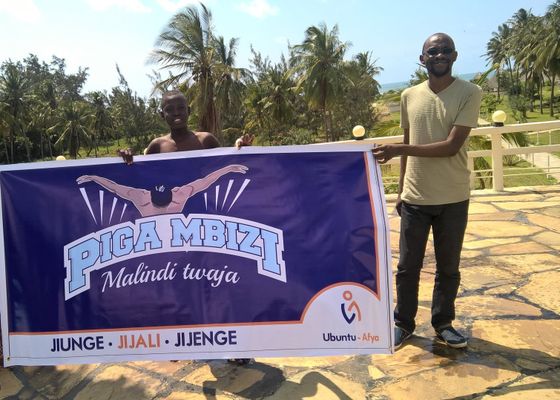This summer, through a new partnership with Carnegie Mellon University, and with funding from the Social Entrepreneurship Accelerator at Duke (SEAD), the Innovations in Healthcare East Africa team placed graduate students from Carnegie Mellon University Rwanda with network innovators. These three-month projects focused on high-impact technology projects, such as developing new capabilities for electronic health record systems.
As a software engineer, there's a lot to think about if asked what to expect in any software or application. However, when it comes to the health sector, a worker would expect at most two features from a software:
- Ease of use: Perform tasks using less time and energy.
- Efficiency: Perform many tasks better with the use of the computerized system.
My internship project entailed working on a health management information system currently being used by Afya Research Africa (ARA) in their Ubuntu Afya clinics which are located in several counties in Kenya. The development of the system started almost ten years ago, by Dr. Moses Ndiritu, whom I have been honored to work with throughout my stay at ARA. I was part of the software development team that was working on improving and adding new functionalities to the system.
I spent my project working specifically with the StoneHMIS system, which was developed using the Zend framework. Developing a health system requires some basic knowledge on the processes carried out in clinics. Considering that I have little background knowledge in medicine, working together with a medical doctor was a big asset to me.
The fact that the design and development of StoneHMIS was started by a medical doctor has made a big difference to other health management information systems since it is customized to:
- Reduce wait times experienced by patients and make necessary information easily accessible to doctors.
- Reduce workload for all clinic staff, including doctors, nurses, pharmacists, etc.
- Support easy access of patient data/ information to the allowed staff.
- Preserve patient's privacy.
- Fit in the context of health system institutions in countries such as Kenya.
Throughout my work at ARA I wondered how many lives could be saved, or disabilities avoided if patient wait times in hospitals were reduced, and if doctors had easy access to needed information in a timely manner. These questions greatly motivated me and guided my work. Consider a scenario where the patient information wasn't conveyed accurately to the care providers. This would be a disadvantage to the patient, and impact the quality of the healthcare received.
Apart from developing the system, I learned a lot in terms of medical procedures, as well as improving my programming skills. Software development usually involves many programming languages while working on different projects, especially when one is new to the field. However, during my study at Carnegie Mellon University in Rwanda (CMUR), I learned that the most important aspect in programming is the algorithm used and its adaptability to any language that can solve an intended problem. I managed to apply this knowledge in the development of the health system I was working on to ensure that more lives are saved.
-------------------------------------------------------------
Carnegie Mellon University in Rwanda (CMUR)
Since 2012, Carnegie Mellon University, one of the world's leading universities in engineering, education and research, started a campus in Rwanda. The campus offers similar degrees that are offered in Pittsburgh, USA.
Afya Research Africa is non-profit organization committed to fostering research in human health and promoting best practices in the provision of healthcare in Africa.
Image caption: Robert Basomingera, MSc in IT student at Carnegie Mellon University Rwanda (right) and a participant during "Piga Mbizi", an event organized by Afya Research Africa in Malindi on 13th August, for epilepsy awareness. The event entailed swimming competition followed by dinner with talks about epilepsy.

